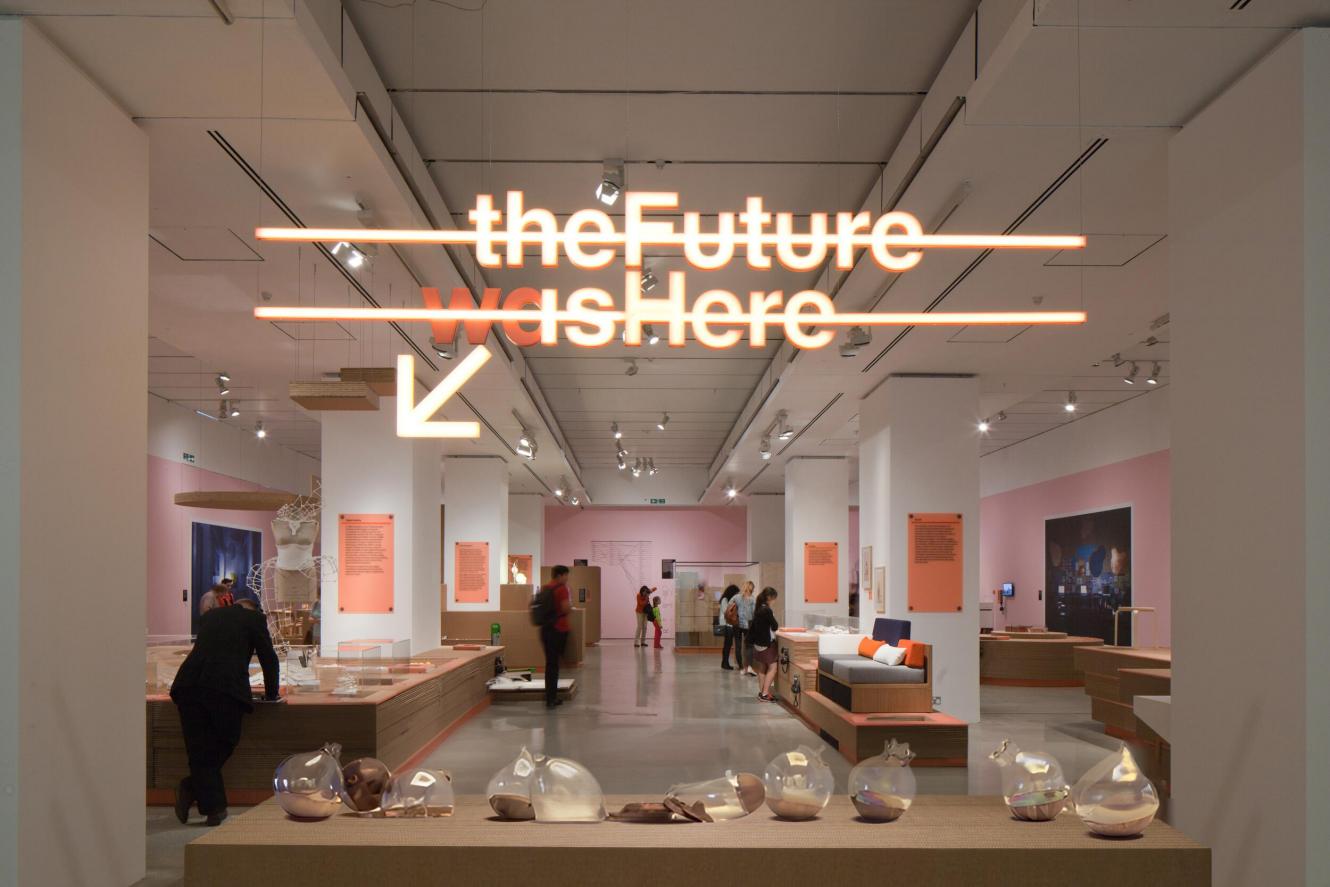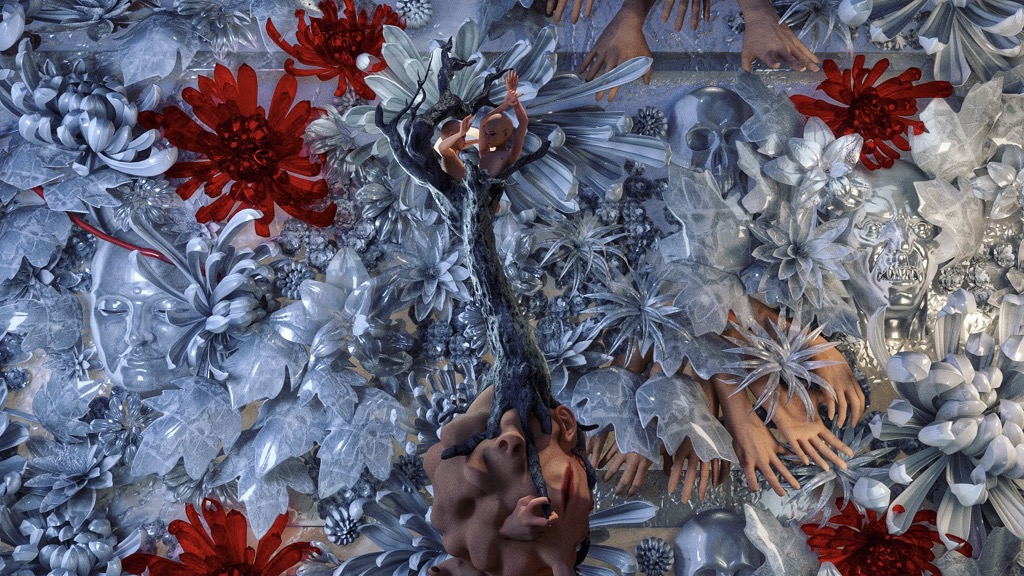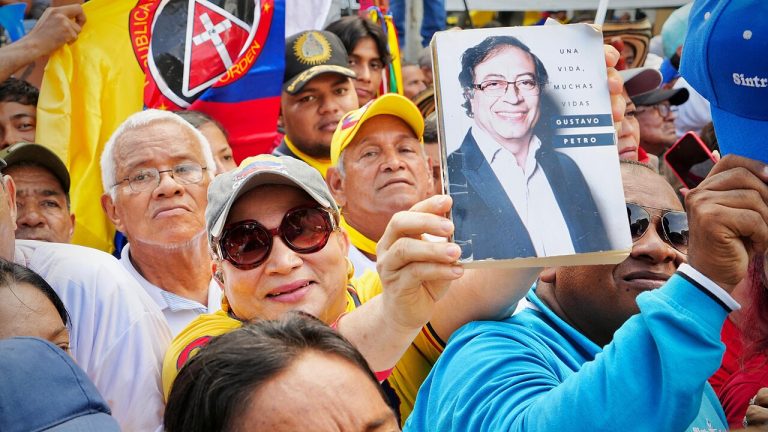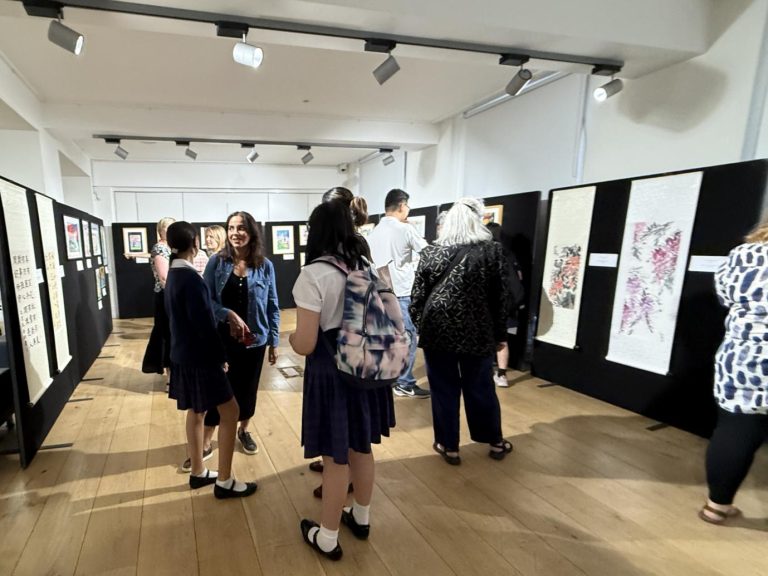Di Cao is a multidisciplinary artist based in London whose work combines metaphorical narrative with practical craft in the context of digital surrealism and contemporary design. Cao’s work orbits around eternal dualities—between nature and artifice, absence and solidity, self and cosmos. It draws heavily from philosophical research, particularly from Maurice Merleau-Ponty’s ideology and cosmology. His sculptures and digital artworks represent a Heraclitean flow, where everything is always becoming.
Cao’s sensitivity to material based on its weight, rhythm, and stillness resonates with Maurice Merleau-Ponty’s theory that space is not just a neutral container, but an expressive field of perception. Perceiving is not a detached observation but an immersive experience. Cao’s installations consequently transform into places of bodily interaction rather than being viewed only as objects. Their appearance demands orientation, raises awareness, and frequently involves a quiet form of submission.




Symobiosis, created in 2022, conducts a quiet dialogue between presence and absence, reminiscent of Merleau-Ponty’s philosophy, where void and volume are interconnected.
The work combines wood and glass of wood and glass evokes biological intimacy as well as material difference, echoing the exocarp and endocarp, or fruit’s outer and inner skins. Furthermore, the glass itself creates a negative contour that keeps the wood in dialogue rather than just revealing it. The blank becomes formative in this configuration.
The work itself represents is a tangible mediation that builds by interdependence, with the vulnerability and protection, solidity and fracture. Absence is just as important as the presence. Silence and restraint are not passive; they are essential. The Japanese aesthetic of mono no aware, or the painful awareness of temporary nature, is reflected by this sensibility. In Cao’s work, impermanence offers structure rather than being transient.
In Vajra Petals (2023), Di Cao explores a digital topography where symbols bloom and blend. The piece is created as a 3D modeling staging of bizarre pieces, such as pulsating petals, silvered hands, and ritual masks, and it becomes a modern iconography of metamorphosis. Its circular rather than linear logic echoes Heraclitus’s conviction that “everything flows,” that time, nature, and identity are all locked in an endless cycle.
Vajra Petals (2023) create a transitional zone where past and future, human and machine all dissolve into each other drawing from Daoist metaphysics. There is solely fluidity without any fixed point. Here the boundaries dissolve and only mirrored textures are present. Cao uses digital precision to render the organic uncanny and create the nature through 3D modeling. Like Borges’s infinite library or the language of Hölderlin, the work defies conclusion. The beauty of the work is it challenges the audience to navigate using intuition rather than pure logic.
Across both analogue and digital field, Cao creates a vocabulary of gestures, which invites audiences to inhabit symbols rather than inhabit them. A tilt of wood, a mirrored curve, a scarlet bloom can all be a metaphors to read. His forms evoke a state of attention rather than just illuminating a concept. This traits aligns with Hölderlin’s poetic claim that “man dwells poetically”, that our deepest comprehension of the universe could emerge from immersion in ambiguity rather than clarity.
Cao’s work does not seek grand narratives. Instead, it draws people into immersive experiences, where form becomes a carrier of sensation, and sensation becomes realization. He offers viewers a space of slowness, interiority, and suspension.
Taken as a whole, these works demonstrate an artist deeply attuned to the metaphysical aspects of form. Whether working with digital interfaces or sculpting from glass and wood, Di Cao reimagines old concepts for the modern sensorium. His works transform everyday symbols—fruit skins, flowers, human gestures—into silent gateways to the unknown. Here, there is neither spectacle nor assurance. Only movement. Only emergence.
Cao transcends object-making by incorporating Heraclitus’s endless flux, Merleau-Ponty’s embodied space, and Borges’ lyrical unknowability into his work. He draws us into atmospheres, places where cognition turns into touch and meaning dissolves into rhythm. These are dynamic systems rather than static pieces of art. They inquire, “How does this move me?” rather than, “What does this mean?”








